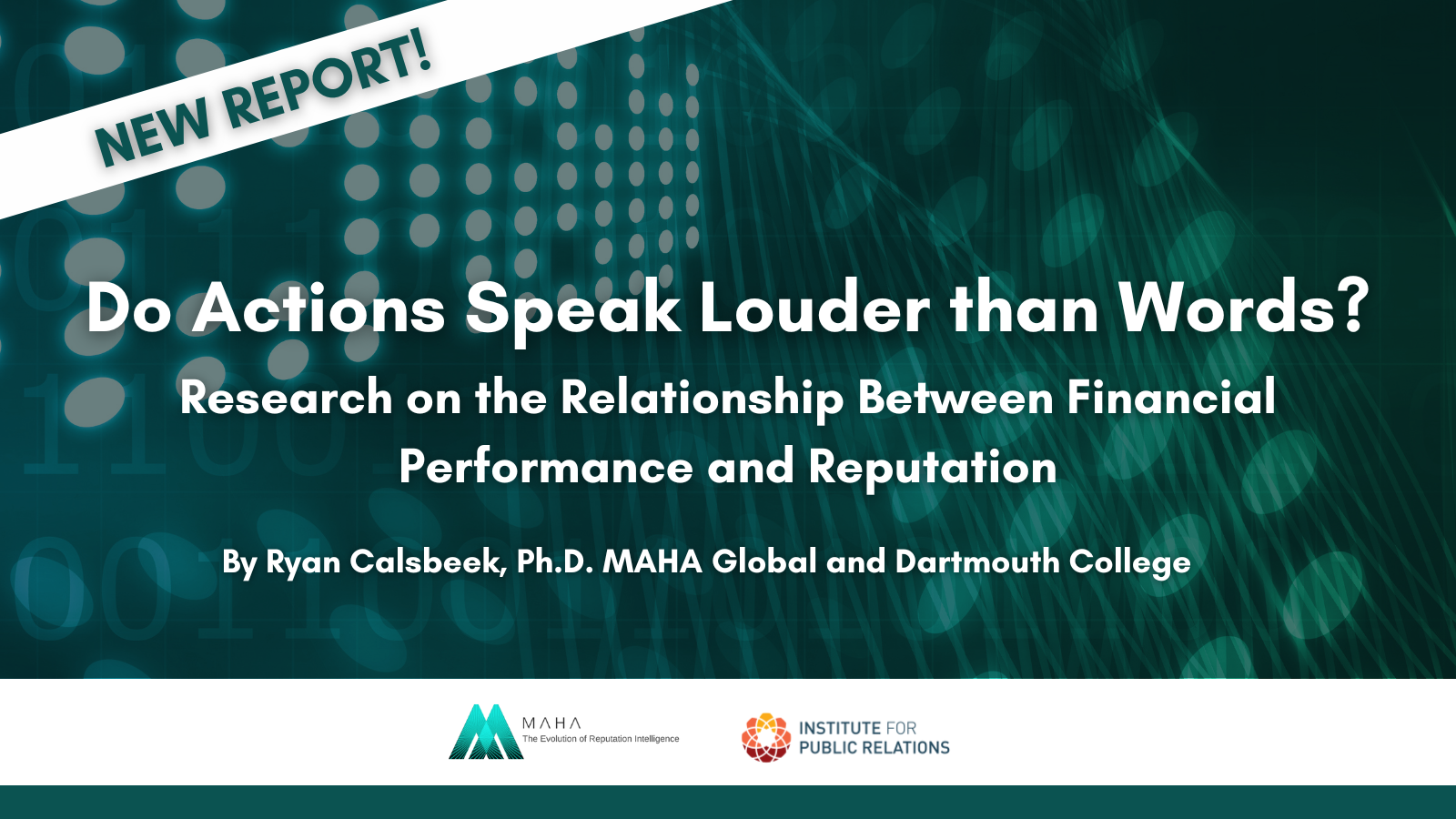
The practice of Public Relations is approaching a crossroads in its relationship with the marketing function – a crossroad not dissimilar to the 1990s when the Integrated Marketing Communications (IMC) concept was first introduced.
Although many professionals today see the need for change they are conflicted between reputation and marketing functions. Whilst IR, Internal and Corporate Communications are tripping along nicely, will the rest of PR end up reporting directly to the CEO or be subsumed under marketing?
The concept of integration understandably elicits concern among PR purists who legitimately defend the value of their pre-eminent expertise in two-way communication. Yet the critical challenge of proving the nature and extent of PR value has remained surprisingly elusive for many.
My work has provided many answers to these burning questions but joining the IPR Measurement Model Standardization Taskforce was a great trigger to gather insights from other critical thinkers in PR. During a US visit in late 2015, Dr. Nathan Gilkerson (Marquette University) joined me to undertake preliminary exploratory research aimed at understanding challenges and opportunities; planning approaches and metrics & models.
With the support of my Task Force counterparts, we were able to secure in-depth interviews with eight outstanding communication leaders – drawn from academia, in-house and agencies.
Today I touch on the principal themes of accountability and the importance of sophisticated communication measurement that emerged from our research. I also identify significant opportunities for organizations and professionals to position themselves at the forefront of these developments.
Challenges to the Future of PR
Unclear Value-Frame: it is typical to see a limited understanding of how communication creates value for the organization. A lack of structure around value impairs all PR/Communication functions: from planning and resourcing through to execution and evaluation.
Limited Planning: the extent and quality of planning is uneven in practice. While working to a model and adopting a formal planning structure tends to be an ideal case, the norm consists of tactical plans often developed on the basis of untenable assumptions or missing facts.
Creative-led strategy: using ideation as the starting point often side-steps the real issue and professionals run the risks of generating misguided foci with no basis in facts. Yes, PR can be a highly creative pursuit but the focus needs to be directed towards applying that creativity to achieving practical organizational objectives.
Silo operation: senior executives who demand a whole-of-business picture today are often frustrated by the silo-ization of communication. There is little awareness of where a PR message fits in the context of a holistic, organizational messaging strategy. Or how such messages can, and do, leak between audience channels and platforms or – indeed – how any specific message resolves the challenge of reputation versus brand uplift.
The Opportunities
Change will foster many opportunities to take a leadership mantle stretching across the industry on both client and agency sides:
Re-telling the value story: Explain where and how communication creates value based on proven models. To gain traction, that value needs to be framed around organisational objectives and quantified with outcomes.
Planning and Guiding focus: A breakaway group of innovators and early adopters is already integrating quality planning and objective setting with Measurement & Evaluation. As a result, this group can plan and guide focus of effort for optimal effect then report results with meaningful numbers. This kind of innovative ‘dynamic justification’ feedback loop will garner greater access to the C-Suite or Board than ever before.
Embracing Integration: The merging of Advertising, Social, and PR will continue to gather pace. Integration is here and is changing the communication landscape. Previously distinct silos are merging and evidence is mounting that most audiences cannot separate platform influence.
In this new era, PR – as we have known it – will need to be clearer about supporting either reputation OR brand, and internal organizational relationships will become more important as the ability to deliver relies on cross-functional prowess. While functional specializations will continue, titles will matter less in five years’ time.
Data Talks, BS Walks: The ‘Value Perception’ of the communication role will increasingly rely on specialist data and analytics. While simple evaluation may continue on a tactical basis, guesswork will be a thing of the past. Specialist researchers will be in greater demand to prove the link from communication strategy to reputation or brand impact and – ultimately – to the bottom line.
A future not as we know it…
PR professionals will be able to show the value they create from a broader organizational perspective. While this is more complex in an integrated communication (IC) landscape, it is nevertheless possible and is already being achieved thanks to credible models that provide a reference framework to deliver the structural discipline that underpins quality analytics.
Armed with a good structural basis of knowledge, communication professionals can finally become a physician that can ‘heal thyself’. And, as a result of demonstrating value, such professionals will attract a greater share of resources and retain their roles as valuable members of senior management teams.
 Michael Ziviani is the founder and CEO of Precise Value Pty Limited of Australia. He is a member of the IPR Measurement Commission. Follow Michael on Twitter @mikeziv.
Michael Ziviani is the founder and CEO of Precise Value Pty Limited of Australia. He is a member of the IPR Measurement Commission. Follow Michael on Twitter @mikeziv.



